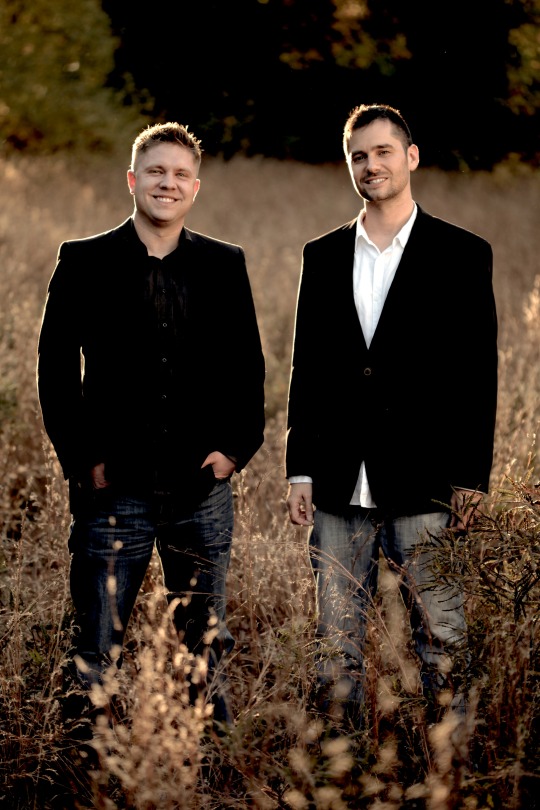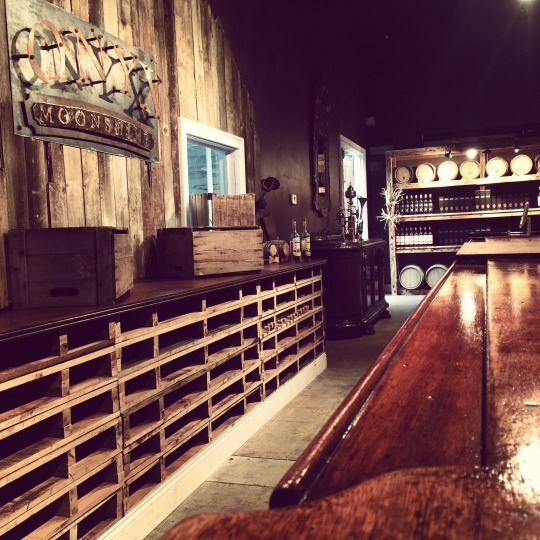
Majoring in business 14 years ago, Adam Von Gootkin was simultaneously failing out of college and questioning the wisdom of paying $38,000 tuition to take entrepreneurship courses from professors who had never started companies.
After all, he’d been a budding entrepreneur since his single-parented childhood. To earn spending money, he sold the offspring of his younger brother’s pet mouse back to the pet store as snake food and launched his own for-profit candy-sales campaign in competition with athletes at his middle school.
Von Gootkin (pictured at left) departed college after one semester and got back to business. With a like-minded partner, Peter Kowalczyk (pictured right), he set out to build a social networking platform for college kids–pre-Myspace and Facebook. When that failed for lack of funding, they went into business promoting parties, and eventually established a music recording studio in Connecticut. The duo had success, but longed to get into manufacturing. “America is outsourcing so much of what we produce. We wanted to make something,” Von Gootkin says.
A product idea dawned on them in 2010. “One day we were buying liquor and we asked the store manager, ‘Do you have anything made around here?’ It struck us that everything is made somewhere else. Most spirits are imported from other countries,” Von Gootkin says.
Not only did the partners share a joy of imbibing and hobbyists’ knowledge about distilling, but both are descended from ancestors who had been in the booze business around the time of prohibition. Onyx Spirits of East Hartford, Conn., was born.
Von Gootkin tells the entire tale in an entertaining and down-to-earth new memoir, “Living Proof: Onyx Moonshine’s Journey to Revive the American Spirit.” The book contains plenty of inspirational anecdotes for other would-be entrepreneurs, as well as authentic moonshine cocktail recipes.
Authenticity is a theme for Von Gootkin. “We realized that consumers are looking for authenticity and quality, not batches made by computer that get a top-notch price because they’re in a fancy bottle.” And though advisors told them there was money to be made in vodka, Von Gootkin and Kowalczyk felt it wouldn’t be true to their New England roots.
“The only two spirits that are authentically American are moonshine and barrel-aged moonshine, which is bourbon,” Von Gootkin says. “We wanted to dig up this skeleton in America’s closet and make something Americans can be proud to order and drink.” They crafted a recipe and put it in “a classy bottle, and an elegant brand,” instead of “hokey, cheesey mason jars,” Von Gootkin says.
Today Onyx Spirits Company produces Onyx Moonshine and Onyx Secret Stash Whiskey–both International Craft Awards Competition gold medal winners, made with New England corn and barley and Connecticut spring water. Von Gootkin describes the flavor as “like a smooth vodka and light whiskey with a hint of bourbon and apple.” The company also makes Onyx 111, a higher-proof moonshine, Onyx Apple Honey Infusion, and Cape Cod Cranberry Moonshine.

Onyx distributes about 5,000 cases of its products annually all over Connecticut, Massachussetts, Rhode Island, and upstate New York, as well as nationally through drinkbetter.com. The company employs 8 people full-time and 5 part-time and next week will open a speakeasy-style tasting room in Manchester, Conn.
“We’re in a place a lot of small business owners get to,” Van Gootkin says. “We have opportunities to grow fast if we want to, but with that comes other consequences. We would have to bring in substantial outside investment dollars and venture capital. That kind of money wants to see an exit strategy–meaning a sale of the company. We’ve had to take a hard look at why we are doing this. Are we in business just to make ourselves and others wealthy quickly?”
Having come from a family that lost a distillery to tax evasion in the 1800s and a speakeasy to prohibition in the 1900s–more stories he shares in his book–Von Gootkin is determined to make Onyx a legitimate business that lasts well into the 2000s. “This needs to be here to stay for the long term, and that means slower growth for the brand,” he says.




